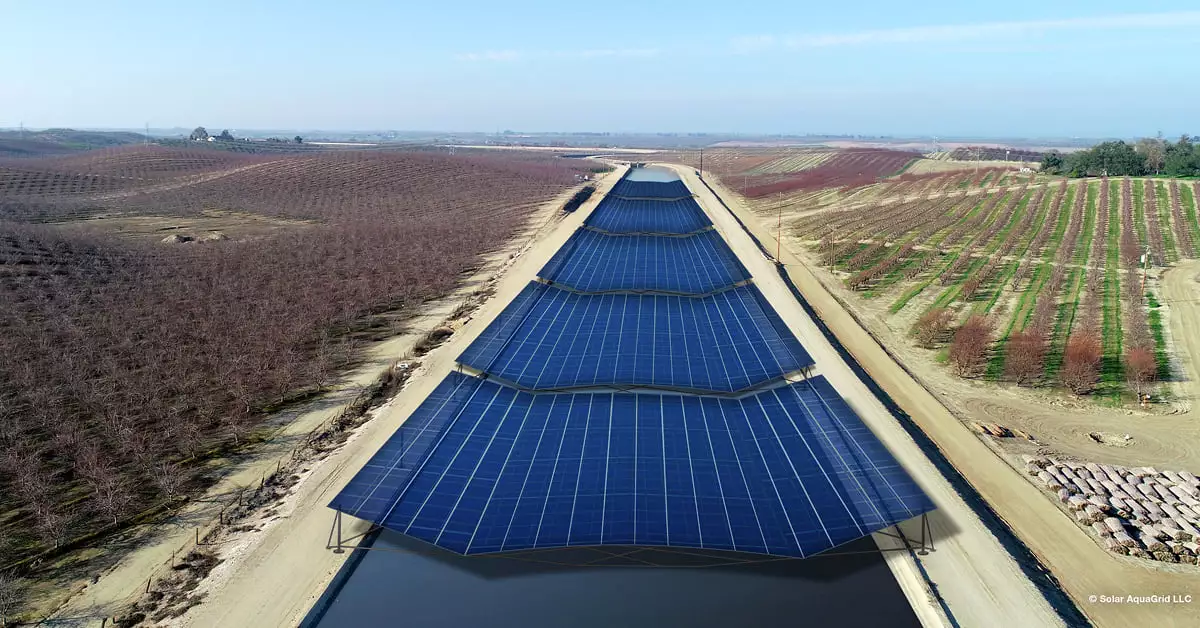With most of Arizona in a state of moderate to extreme drought, the Gila River Indian Community and the US Army Corps of Engineers have signed a deal to begin a solar-over-canal project designed to cut down evaporation and boost solar efficiency.
With a similar project planned for California still yet to get started, the US$6.74-million project becomes the first of its kind to begin construction in the USA. The first phase aims to build solar photovoltaic shades stretching across the 1-10 Level Top canal for a length of around 1,000 ft (305 m).
The benefits of this simple idea could be significant. Not only will the solar panels generate up to one megawatt of power for the Gila River Indian Community, they'll also provide shade for the water below, helping keep water in the canals rather than letting the baking desert heat evaporate it away. Viewed as a solar farm, it should be considerably cheaper, since no land needs to be acquired.

Furthermore, the water will help cool the panels, increasing their efficiency and creating a ~3% boost to power production, according to Professor Roger Bales, who wrote about the California project for The Conversation in 2022. In a study published in 2021, Bales and his team argued that "covering all 4,000 miles of California’s canals with solar panels would save more than 65 billion gallons of water annually by reducing evaporation," while generating up to 13 GW of renewable energy in a distributed fashion that could cut down on transmission losses.
The new Arizona project is scheduled for completion in 2025.
“This is the type of creative thinking that can help move all of us toward a more sustainable future,” said Tom Buschatzke, Director of the Arizona Department of Water Resources. "Leveraging existing infrastructure such as the Level Top Canal to help provide sustainable, dependable energy – and to do so as part of cooperative partnership like this one – constitutes a win all around."
ICYMI we signed a partnering agreement with @GRIC_Official last week for a historic and innovative project to conserve water and generate renewable energy for the community. A great way to celebrate #NativeAmericanHeritageMonth! pic.twitter.com/u8qewVFUaq
— Assistant Secretary of the Army for Civil Works (@ASACivilWorks) November 14, 2023
While this will be the first project of its kind in the USA, something similar has already been built overseas. The Canal Solar Power Project in Gujarat, India, began in 2012, and by 2015, it had a megawatt-scale pilot project complete and operating, covering about a stretch of canal about 750 m (2,460 ft) long.
But SunEdison, the renewable energy company in charge of the project, found itself filing for bankruptcy in 2016. The solar canal project certainly wasn't responsible for the company's woes – at the time, it billed itself as the world's largest renewable energy company and had plenty of other irons in the fire. But the bleak financial situation put the kibosh on any plans to extend the Canal Solar Power Project.
Here's hoping the Arizona and California projects have a better outcome.
Source: Arizona Department of Water Resources via Recharge News.





